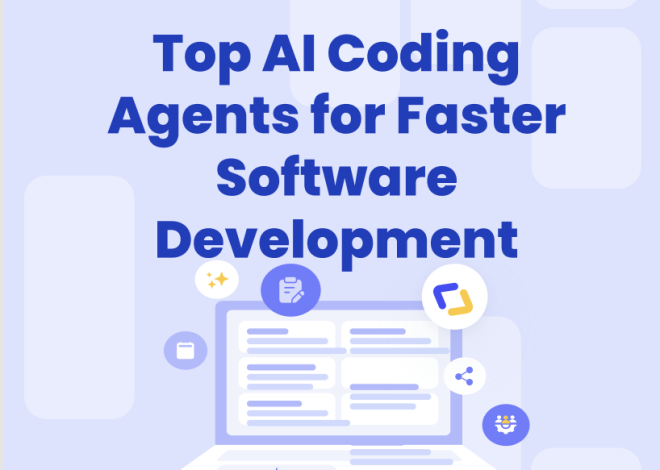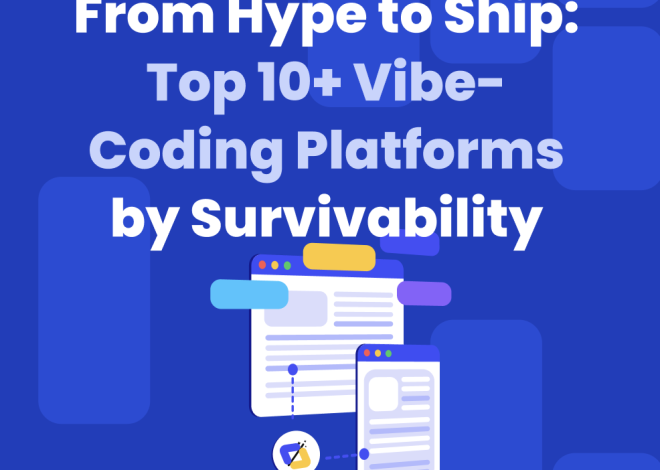
What Is Vibe Coding? The Next Big Shift in Software Development
“Vibe coding” — it’s a phrase buzzing through dev circles in 2025. But what is it really? Is it hype, trend, or the next evolution of how humans and AI build software together? Let’s unpack.
1. Origins & Definition of Vibe Coding
1.1 Coined by Karpathy & the Trending Term
- The term “vibe coding” was popularized by Andrej Karpathy in early 2025.
- It describes a paradigm shift: instead of writing each line, the developer guides, prompts, tests, and iterates over AI-generated code—almost as if the code “emerges” from the prompt.
- Merriam-Webster even listed it as a “slang & trending” usage.
1.2 Definition & Core Idea
Vibe coding is an AI-driven software development method where:
- You express intent (in natural language, prompts) rather than coding manually.
- The AI generates code, you test, refine, and iterate—often without deeply reading or editing each line.
- The human’s role shifts from typing code to orchestrating, validating, and guiding the AI.
In effect, you “give in to the vibes”—you tell, not code. Karpathy’s phrase: “forget that the code even exists.”
2. How Vibe Coding Works (Workflow & Tools)
Here’s a rough sequence of how vibe coding might work in practice:
- Define goal / prompt
You write something like “Build me a user dashboard that shows user name, posts, and a filter by date.” - Initial AI generation
The AI produces scaffolding: UI, data model, API calls, wiring. - Run & test
You execute it, see errors, prompts like “Error: undefined method X” or missing route. - Feedback & iteration
You feed error messages, adjust prompt, ask AI to fix or refine parts. - Refine, re-run, validate
Through multiple loops, the code stabilizes to working state. - Add constraints / robustness
You can ask the AI to add authentication, validation, performance tweaks. - Delivery / deployment
Deploy the app, monitor it, and continue iteration using vibe coding.
Tools and environments supporting this include AI coding assistants, LLM-based agents, and platforms that allow prompt-based generation plus feedback loops.
Important: vibe coding is not just autocomplete — it’s embracing prompt + iteration as primary.
3. What Makes It Different from Traditional AI-Assisted Coding
It helps to see how vibe coding differs from, say, tools like Copilot, code completion, or pair programming with AI.
| Feature | Traditional AI-Assisted Coding | Vibe Coding |
|---|---|---|
| Human writes code lines, AI suggests completions | AI writes large blocks or full modules from prompt | |
| You inspect, review suggestions & modify | Sometimes you accept output without line-by-line reading | |
| Humans keep deep architectural control | Humans offload more control, focusing on guiding and validating | |
| Works as augmentation | Works as a shift in role from writer → navigator, critic, guider | |
| Usually for segments / helpers | Targets building larger features or prototypes via prompts |
In essence, vibe coding is more radical: it blurs the boundary between telling and coding.
4. Benefits & Potential Upsides
Here’s where vibe coding shows promise:
- Speed & prototyping
You can spin up prototypes very quickly, with minimal boilerplate. - Lower barrier to entry
Non-coders, designers, PMs may be able to manifest ideas into working apps. - Focus on intent, not syntax
You spend more time on “what” rather than “how.” - Iterative, conversational development
The feedback loop becomes more natural: “Fix this bug,” “Add a filter,” etc. - Democratization of software creation
More people can participate in building tools or prototypes. - Cognitive offloading
AI handles the repetitive, structural, plumbing tasks; you manage vision, design, and logic.
These can result in greater speed, creativity, and inclusive product iteration.
5. Risks, Challenges & Criticisms
It’s not all smooth vibes. Here are key pitfalls:
5.1 Lack of Accountability & Understanding
Because you didn’t write the code, you may not fully understand it, leading to bugs or security holes.
5.2 Maintainability & Refactoring Difficulty
AI-generated code may lack clear structure, comments, or rationale, making future changes hard.
5.3 Security & Vulnerabilities
Prompt-based code may miss edge cases, validation, sanitization, or adopt insecure patterns.
5.4 Black-box / Hidden Logic
You lose control over how decisions were made; AI inference paths are opaque.
5.5 Suitability Limits
It’s probably more suited for prototypes, internal tools, or experimental features—not mission-critical systems. Karpathy himself noted it’s “not too bad for throwaway weekend projects.”
5.6 Debugging & Error Correction
Errors might be harder to diagnose when you didn’t design the code originally.
5.7 Overtrust & Complacency
Developers may accept AI output without full challenge, leading to holes.
5.8 Ecosystem & Tooling Gaps
Libraries, modules, cross-file integration, versioning, testing—all these are harder under vibe coding.
As several thinkers argue, vibe coding has promise, but serious risks if used uncritically.
6. Use Cases & Where It’s Already Being Tried
Here are places where vibe coding is gaining traction:
- Rapid prototypes & side projects
For experimenting ideas, MVPs, throwaway apps. - Solo founders / small startups
One person using prompts to bootstrap product functionality. - Internal tools / dashboards
Simple CRUD, workflows, filters, data dashboards. - Designers / UX practitioners
Turning prototypes / mockups directly into working front-end code. - Educational, experimental environments
Learning, experimenting, exploring AI’s capabilities.
Media reports: projects by non-coders (e.g. “I built a game in minutes via vibe coding”) have gained attention.
Startups are using this paradigm to reduce dev overhead.
Some companies are building monitoring agents to catch issues created by bad vibe coding.
In practice, many adopt vibe coding in parts of systems (for prototyping) rather than full production.
7. How to Adopt / Experiment with Vibe Coding
If you’re a dev lead, founder, or team wanting to try:
- Start with non-critical modules
Pick a feature or dashboard where errors have low risk. - Use AI / LLM tools with good prompt support
Tools that allow error feedback loops, prompt chaining, context persistence. - Pair with human review & validation
Don’t blindly trust. Always test, review, refactor. - Encourage prompt engineering skill
Good prompts lead to better generation. - Track metrics & errors
Monitor failures, debugging time, maintenance effort. - Iterate slowly and document the process
Understand where vibe coding falls, where it excels. - Blend hybrid models
Use vibe coding for scaffolding, fallback to manual when complexity grows.
Over time, teams may build templates, prompt libraries, best practices.
8. Future Outlook & What to Watch
What might vibe coding evolve into?
- Better explainability / traceability
Tools that can show how AI decided code paths or logic. - Agentic / autonomous vibe coding
Agents that proactively generate, monitor, adapt parts of system autonomously. - Hybrid collaborative systems
Human + AI teams working in flow, switching roles back and forth. - Standardization & safety frameworks
Governance, auditing, compliance built into vibe coding systems. - Vertical / domain-aware vibe models
Specialized models for healthcare, finance, IoT, etc. - Seamless migration to full code
So that the prototype built via vibe coding can be “handed over” to full code with minimal friction. - Shifting roles & skill sets
Developers become curators, prompt engineers, AI supervisors rather than pure coders.
If adopted smartly, vibe coding may not replace developers — but it can dramatically change their workflows and responsibilities.
Additional Resources:
News
Berita Olahraga
News
Berita Terkini
Berita Terbaru
Berita Teknologi
Seputar Teknologi
Drama Korea
Resep Masakan
Pendidikan
Berita Terbaru
Berita Terbaru
Berita Terbaru


